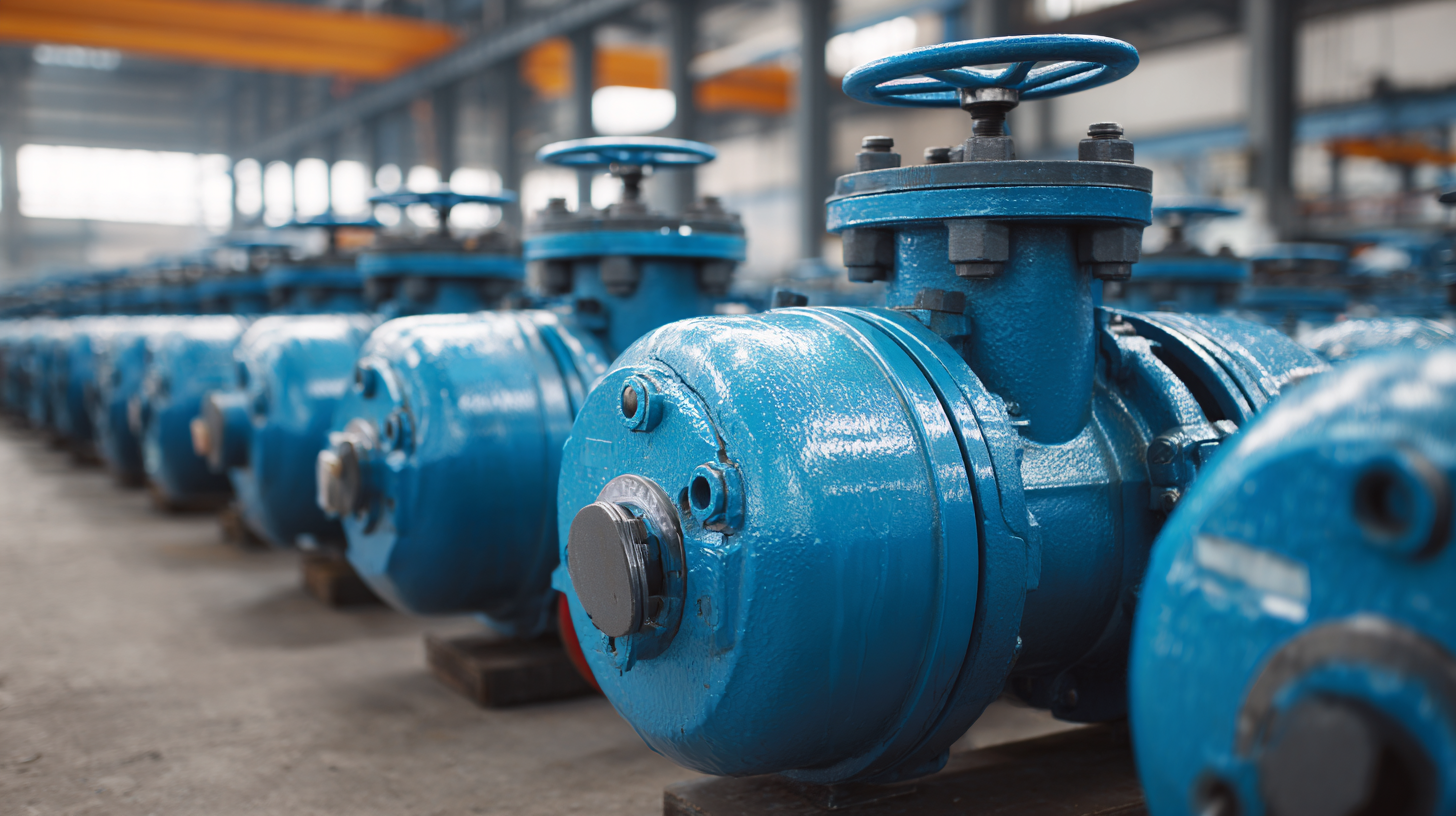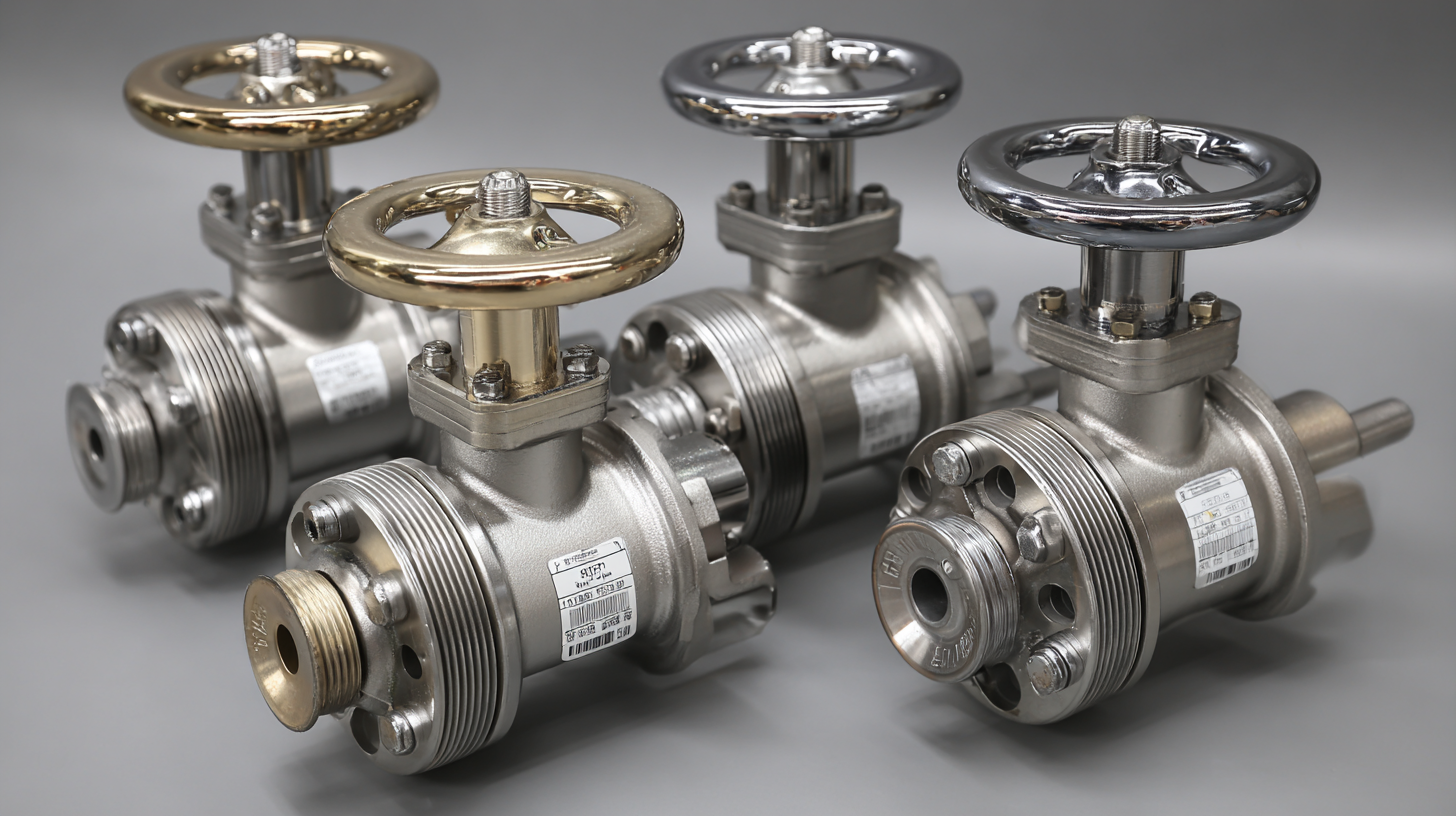Solutions for Choosing the Best Steel Ball Valves: Key Insights from Industry Trends and Data
In the rapidly evolving landscape of industrial applications, the selection of the best steel ball valves has emerged as a critical factor in ensuring system efficiency and reliability. Recent industry reports indicate that the global ball valve market is projected to reach approximately $9.89 billion by 2026, with a significant share attributed to the growing demand for steel ball valves across various sectors, including oil and gas, chemicals, and water treatment.

As operational complexities increase, understanding the intricacies of steel ball valve design and material specifications becomes paramount. Key insights derived from market trends reveal that factors such as valve size, pressure rating, and corrosion resistance are essential in the decision-making process. Consequently, industry players must navigate these complexities to choose the most suitable steel ball valve that aligns with both current requirements and future challenges.
Emerging Trends in Steel Ball Valves: Understanding Global Market Dynamics
The global market for steel ball valves is witnessing significant transformations driven by advancements in technology and changing industrial requirements. According to a recent report by MarketsandMarkets, the steel ball valve market is projected to grow at a CAGR of 5.6% from 2023 to 2028, reflecting increasing demand from various sectors, including oil and gas, water treatment, and chemicals. This growth underscores the importance of understanding global market dynamics that influence purchasing decisions, such as regional market trends, regulatory frameworks, and supplier capabilities.
As industries increasingly focus on sustainability and efficiency, manufacturers are adapting their product lines to incorporate innovative materials and design features. Emerging trends indicate a rising preference for automated and smart valve systems that offer enhanced control and monitoring capabilities. A Frost & Sullivan report highlights that by 2025, nearly 30% of valve sales will come from smart technologies, signifying a shift in how facilities manage their processes.
**Tips:** When selecting steel ball valves, consider the supplier's reputation for quality and reliability. Additionally, evaluate data on product longevity and performance in similar applications to ensure optimal investment in your operational needs. Keeping an eye on evolving industry standards can also provide critical insights for future-proofing your purchases.
Quality Over Quantity: The Importance of Steel Ball Valve Manufacturing Standards
When selecting steel ball valves, it is crucial to prioritize quality over quantity, which hinges on stringent manufacturing standards. According to a recent report by the International Valve Manufacturers Association (IVMA), approximately 30% of valve failures in industrial applications are attributed to subpar manufacturing processes. This statistic underscores the necessity for companies to adopt robust quality assurance measures to ensure durability and reliability in high-pressure environments.
In an industry where safety and performance are paramount, manufacturers are gravitating toward certifications such as ISO 9001 and API 598, which guarantee compliance with international quality standards. A survey conducted by the Valve Research Group revealed that 65% of top-performing companies in valve manufacturing utilize advanced testing methods like Cryogenic and Pressure Testing, thereby enhancing the integrity of their products. This commitment to adhering to high manufacturing standards not only improves product performance but also minimizes liability and maintenance costs for end-users, solidifying the essential role of quality in steel ball valve production.
Innovative Technologies in Steel Ball Valves: Enhancing Performance and Durability
The use of innovative technologies in steel ball valves is revolutionizing performance and durability across various industries. Recent data indicates that implementing advanced materials such as high-strength alloys and corrosion-resistant coatings has increased valve lifespan by up to 30%. This enhancement is particularly crucial in sectors like oil and gas, where equipment reliability is critical under extreme conditions. The global market for steel ball valves is expected to grow significantly, driven by these technological advancements aimed at improving efficiency and reducing operational costs.
Additionally, the integration of smart technologies, such as IoT sensors and predictive maintenance systems, is transforming how steel ball valves are monitored and maintained. Reports suggest that incorporating these features can reduce downtime by nearly 25%, as real-time data allows for immediate responses to performance issues. As industries shift towards automation, the demand for steel ball valves equipped with such innovative solutions will continue to rise, emphasizing the importance of staying informed about the latest trends and advancements in valve technology for optimal decision-making.
Performance Comparison of Steel Ball Valve Types
This chart illustrates the performance ratings of four different types of steel ball valves based on industry data. The ratings are on a scale of 1 to 10, showcasing the varying levels of performance across different designs.
Market Insights: Analyzing Customer Preferences for Steel Ball Valves Today
The steel ball valve market is currently experiencing notable changes driven by shifting customer preferences and industry trends. As the U.S. faucet market projects a growth trajectory, consumers are increasingly gravitating towards durable and efficient valve solutions. High-quality steel ball valves, recognized for their reliability and performance, are gaining traction among both manufacturers and end-users. This is evident as industries seek products that not only meet stringent quality standards but also ensure longevity in performance under varying conditions.

Moreover, as information proliferates and consumers become more educated about their choices, factors such as sustainability and cost-effectiveness are becoming pivotal in their decision-making process. Data indicates that the preference for valves that are not only efficient in function but also environmentally friendly is positioning steel ball valves as a competitive choice in the market. As market dynamics continue to evolve, understanding these insights will be crucial for manufacturers aiming to align their offerings with consumer expectations.
Strategies for Selecting the Right Steel Ball Valve: An Expert's Guide
When selecting the right steel ball valve, industry experts recommend focusing on several critical factors. According to a recent report from MarketsandMarkets, the global ball valve market is expected to reach $8.34 billion by 2025, driven by the increasing demand for high-efficiency flow control solutions across various industries. To make an informed choice, professionals should prioritize the valve's material, design, and pressure rating, which directly influence its performance and longevity in different applications.
**Tip:** Always consider the specific fluid characteristics and operational conditions, as this will help in determining the most suitable valve type. For example, selecting a valve designed for corrosive environments can significantly extend its service life and reduce maintenance costs.
Additionally, industry data from the Valve Manufacturers Association indicates that around 60% of valve-related failures arise from improper selection. Therefore, it is crucial to consult with manufacturers and reference detailed specifications before finalizing your choice. Conducting a thorough comparison of available products can yield substantial benefits, enhancing system reliability and efficiency.
**Tip:** Don't overlook the importance of certification and compliance with industry standards. Ensuring that your chosen valve meets regulatory requirements will safeguard against performance issues and legal complications.

